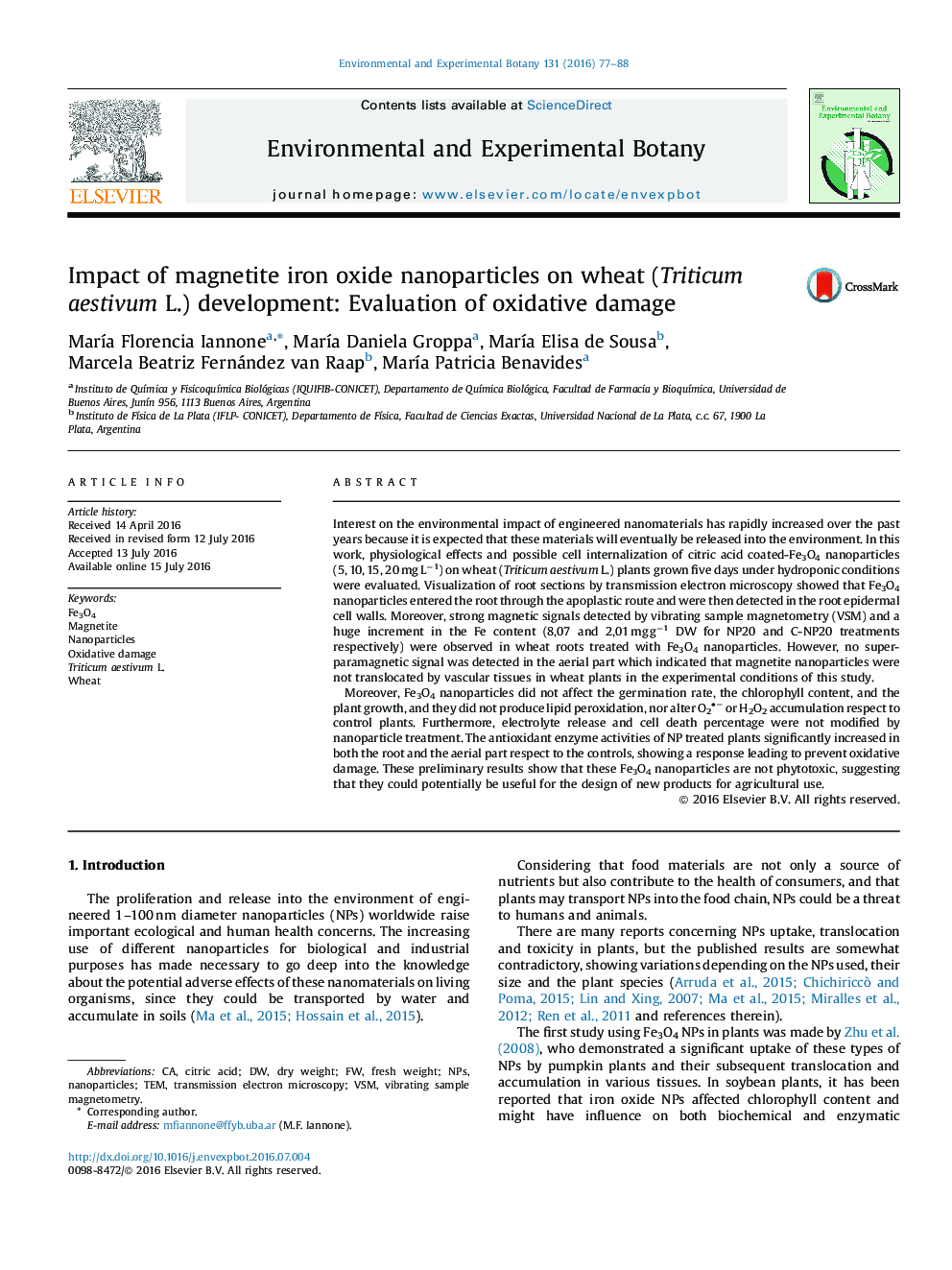| کد مقاله | کد نشریه | سال انتشار | مقاله انگلیسی | نسخه تمام متن |
|---|---|---|---|---|
| 4554001 | 1628046 | 2016 | 12 صفحه PDF | دانلود رایگان |

• A rise in iron content and a superparamagnetic signal were found in treated roots.
• Fe3O4 nanoparticles were detected in the root epidermal cell walls but not in shoot.
• Magnetite exposure did not alter germination, plant growth and chlorophyll content.
• Plant exposed to nanoparticle showed a favorable response to prevent oxidative damage.
• Fe3O4 nanoparticles seem not to be phytotoxic in these experimental conditions.
Interest on the environmental impact of engineered nanomaterials has rapidly increased over the past years because it is expected that these materials will eventually be released into the environment. In this work, physiological effects and possible cell internalization of citric acid coated-Fe3O4 nanoparticles (5, 10, 15, 20 mg L−1) on wheat (Triticum aestivum L.) plants grown five days under hydroponic conditions were evaluated. Visualization of root sections by transmission electron microscopy showed that Fe3O4 nanoparticles entered the root through the apoplastic route and were then detected in the root epidermal cell walls. Moreover, strong magnetic signals detected by vibrating sample magnetometry (VSM) and a huge increment in the Fe content (8,07 and 2,01 mg g−1 DW for NP20 and C-NP20 treatments respectively) were observed in wheat roots treated with Fe3O4 nanoparticles. However, no superparamagnetic signal was detected in the aerial part which indicated that magnetite nanoparticles were not translocated by vascular tissues in wheat plants in the experimental conditions of this study.Moreover, Fe3O4 nanoparticles did not affect the germination rate, the chlorophyll content, and the plant growth, and they did not produce lipid peroxidation, nor alter O2− or H2O2 accumulation respect to control plants. Furthermore, electrolyte release and cell death percentage were not modified by nanoparticle treatment. The antioxidant enzyme activities of NP treated plants significantly increased in both the root and the aerial part respect to the controls, showing a response leading to prevent oxidative damage. These preliminary results show that these Fe3O4 nanoparticles are not phytotoxic, suggesting that they could potentially be useful for the design of new products for agricultural use.
Journal: Environmental and Experimental Botany - Volume 131, November 2016, Pages 77–88